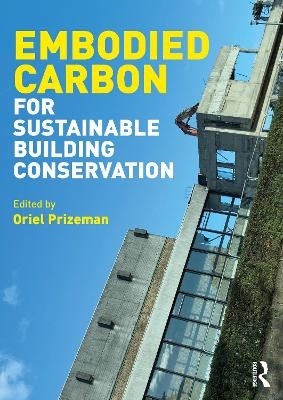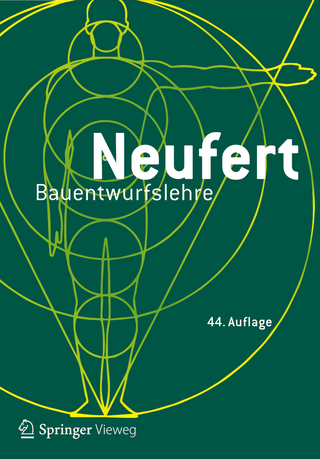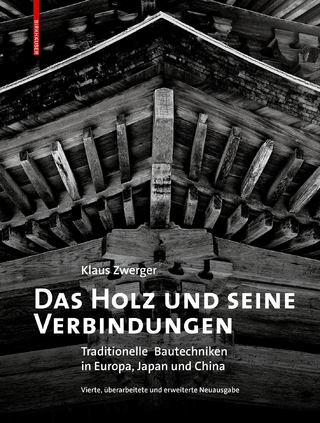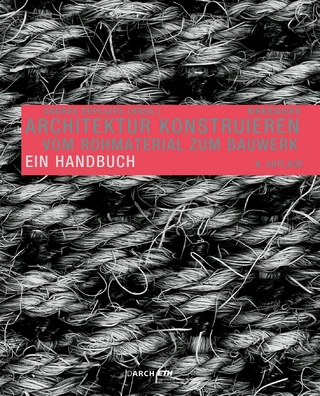
Embodied Carbon for Sustainable Building Conservation
Routledge (Verlag)
978-1-032-86403-7 (ISBN)
- Noch nicht erschienen (ca. Juni 2025)
- Versandkostenfrei innerhalb Deutschlands
- Auch auf Rechnung
- Verfügbarkeit in der Filiale vor Ort prüfen
- Artikel merken
This timely volume provides the latest research, guidance, examples, and methods for understanding, calculating, leveraging, and reducing embodied carbon in building conservation. In the context of climate change and increasing energy costs, imperatives to replace or substantially modify older and historic buildings are rapidly accelerating. The idea that a new or replacement building will perform better overlooks the embodied carbon of that which it replaces. In effect, the pressures of one conservation agenda, that of energy efficiency, threaten to eclipse another, that of heritage. The embodied carbon of existing buildings must be addressed if calculations of operational energy use are to be properly balanced.
In this book, an international and multi-disciplinary group of authors offer perspectives on the leverage and implementation of strategies to account for embodied carbon for the conservation of the historic environment. Examples are deliberately diverse and extend beyond buildings to the valorisation of a heritage grassland landscape specifically because of its capacity to store carbon to the fundamental attributes of historic concrete and our responsibility to consider replacement with critical care.
This book inspires confidence in developing arguments by spreading examples globally and delivering plausible, actual narratives alongside clear up-to-date guidance. It brings together international standard-setters with practitioners, academics and advocates, all clearly explained. It also illustrates how embodied carbon played a pivotal role in seeking to determine the case of saving Marks and Spencer, Oxford Street, London, from replacement. This will be an essential resource for all building conservation and heritage practitioners including building surveyors, architects, conservators, engineers, conservation officers, building archaeologists, and consultants.
Oriel Prizeman is Professor of Sustainable Building Conservation at the Welsh School of Architecture, Cardiff University. Formerly a practicing Architect, she founded an MSc at Cardiff (2013) and Centre (2021). She was board member of the Association for Preservation Technology (USA) 2015-17 and of Architects Accredited in Building Conservation (UK) 2024-.
1. Introduction. Part One: Approaches and Definitions. 2: Whole Life Cycle Analysis as an imperative for Sustainable Building Conservation. 3: Understanding the Micro-Credentials of Embodied Carbon from a Materials Science Perspective. Part 2: Extrapolations. 4: Restoration vs Redevelopment: Embodied Carbon in Conserving a 20th Century Heritage in India. 5: Carnegie libraries of Britain: Assets or liabilities? Managing altering agendas of energy efficiency for early 20th century heritage. 6: Characteristics of grassland burning in the Aso Cultural Landscape, Japan. Part 3: Applications. 7: Case study: Rehabilitating the Nineteenth Century housing blocks of Alexandria. 8: Retrofit Case Studies: An historic university accommodation building and a traditional solid walled house in Ireland. 9: Embodied Carbon as pivot: The case of M&S. 10: Conclusion
| Erscheint lt. Verlag | 26.6.2025 |
|---|---|
| Zusatzinfo | 31 Tables, black and white; 55 Line drawings, black and white; 44 Halftones, black and white; 99 Illustrations, black and white |
| Verlagsort | London |
| Sprache | englisch |
| Maße | 174 x 246 mm |
| Themenwelt | Technik ► Architektur |
| Technik ► Bauwesen | |
| Technik ► Elektrotechnik / Energietechnik | |
| ISBN-10 | 1-032-86403-6 / 1032864036 |
| ISBN-13 | 978-1-032-86403-7 / 9781032864037 |
| Zustand | Neuware |
| Informationen gemäß Produktsicherheitsverordnung (GPSR) | |
| Haben Sie eine Frage zum Produkt? |
aus dem Bereich


